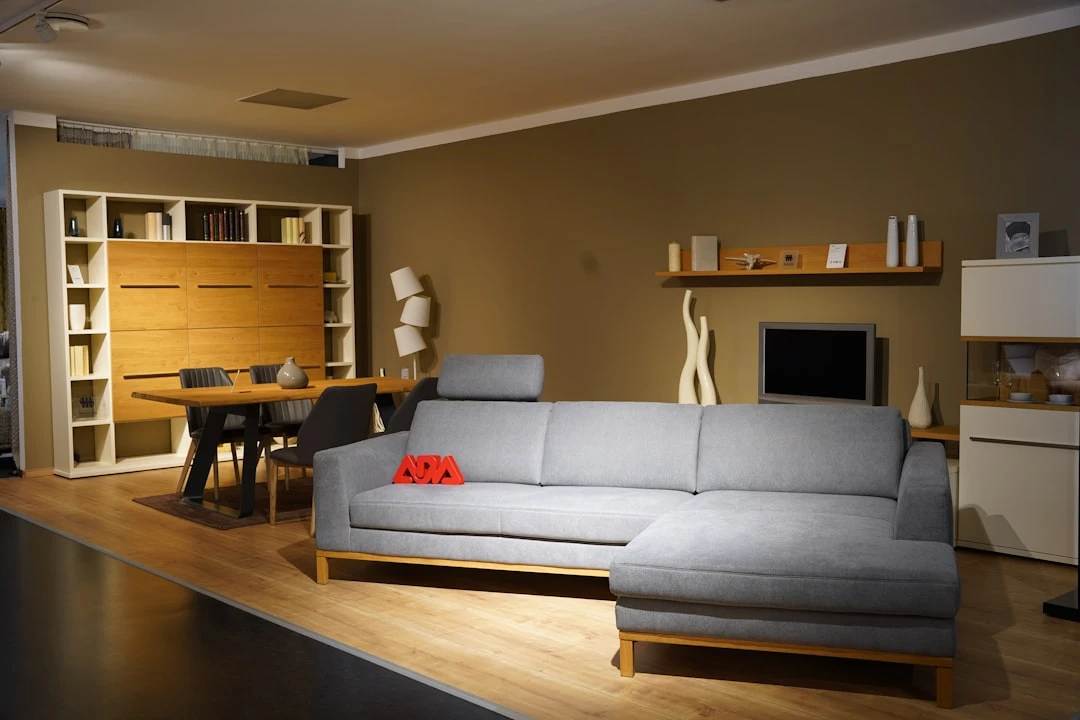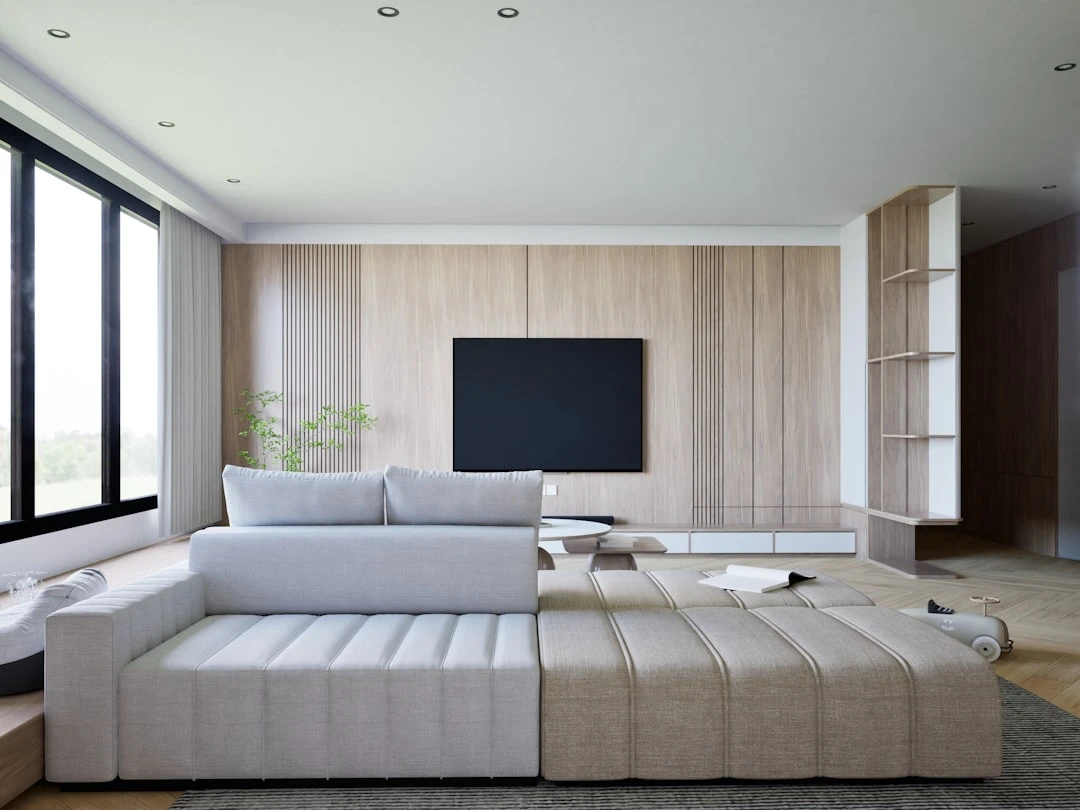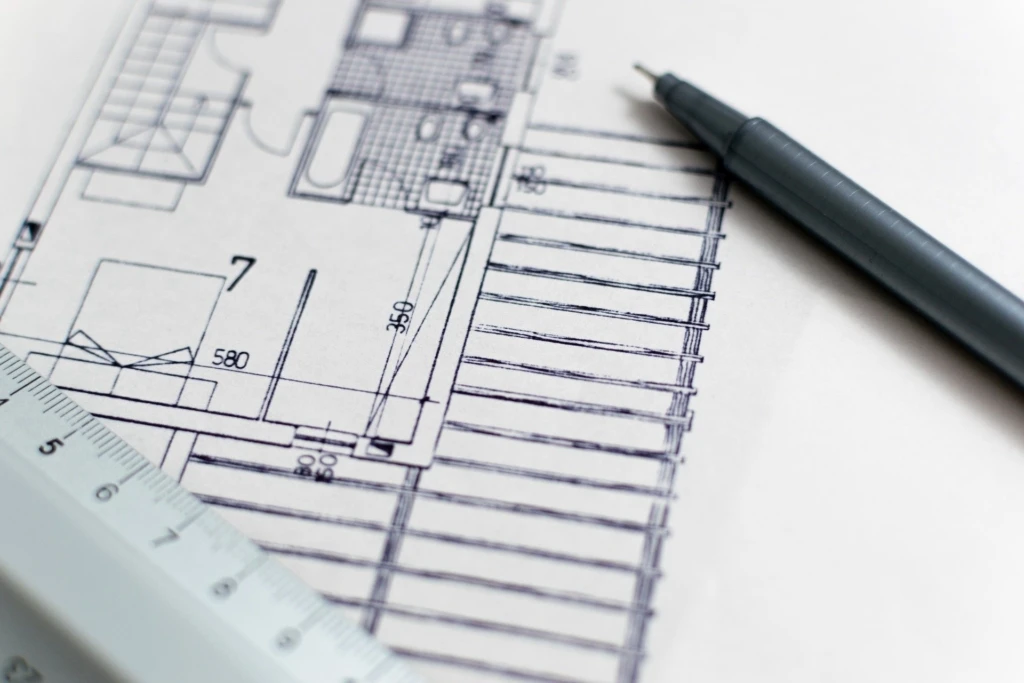Sound Insulation and Partition Panels for Creating a More Comfortable Home Environment

Does your neighbor's conversation or traffic noise from the street bother you? Good sound insulation is one of the most important elements in creating a quality and comfortable home environment. It is especially important for apartment building residents and commercial space owners, but single-family home owners are also increasingly valuing peace and privacy. Let's explore the materials, types, and benefits of sound insulation and partition panels that help create a harmonious living environment.
Sound Insulation Principles and Importance
Sound insulation is a system that reduces the spread of sound from one room to another or from the external environment into interior spaces. Effective sound insulation:
Increases privacy and comfort
Improves concentration and productivity
Helps create a quieter sleep and rest environment
Reduces stress and improves overall well-being
The effectiveness of sound insulation largely depends on the materials chosen and their proper installation. For example, in the construction of Rae Gymnasium a combined solution was used in the walls - wood on one side and drywall on the other, which ensured excellent sound insulation according to requirements. This combined approach has proven itself in various types of spaces, combining both aesthetic and practical qualities.
Sound Insulation Materials and Their Properties
1. Heavy Materials
Concrete, bricks, and plaster are traditional sound insulation materials that block sound well due to their mass. These materials reflect up to 95% of sound waves and absorb only a small portion of sound energy. Their massiveness acts like a natural barrier to sound waves, making these materials ideal for dealing with more serious noise sources, such as traffic noise or industrial sounds. However, they are not always practical for renovating existing spaces.
2. Soft and Porous Materials
Mineral wool, glass wool boards, and acoustic foam are widely used sound insulation materials that are ideal for walls, ceilings, and floors. These materials absorb sound waves and reduce their reflection in the space.
Compared to heavy materials, these are much lighter and more flexible solutions that are easier to integrate into existing structures. Think of them as sound energy "sponges" that trap and disperse sound waves, reducing both the transmission of sound between rooms and echo within the space.
3. Composite Materials
Modern composite materials combine the best properties of different materials:
Cement fiber boards - durable and long-lasting, suitable for both interior and exterior solutions
Wood + gypsum combined solutions - increase the effectiveness of sound insulation
Special sound-dampening gypsum boards - contain added components that improve their sound insulation capacity
As of 2025, Karl Bilder is the official representative of Silbonite mass-colored cement fiber boards in Estonia, offering solutions suitable for both facades and sound insulation. These boards have become popular precisely because of their versatility – they offer both acoustic protection and aesthetic appearance.
Partition Panels and Their Use
Partition panels are specially designed elements that help reduce sound transmission and improve room acoustics.
1. Acoustic Wall Panels
These are decorative and functional solutions that:
Absorb sound and reduce echo
Are available in various designs, sizes, and colors
Work well in living rooms, home offices, and bedrooms
Acoustic wall panels are like a work of art that not only beautifies your space but also creates a more pleasant sound environment. For example, when working in an office, these panels can significantly reduce the disruptive effect of background noise, allowing better concentration.

2. Suspended Ceilings and Floor Panels
In apartment buildings, it is important to reduce the transmission of sound between different floors. Special solutions for floors and ceilings help block footfall noise and other sounds.
Imagine a situation where a child is playing on the floor above, but you hear almost nothing in your apartment – this is exactly the result that quality suspended ceiling and floor panels are designed to achieve. They work like shock absorbers for sound waves, reducing the spread of vibrations through the structure.
3. Composite Panels
Modern composite panels consist of multiple layers that work together to provide optimal sound insulation. They may include:
Heavy mass to block sound
Elastic interlayers to reduce resonance
Porous material to absorb sound
The charm of composite panels lies in the cooperation of their layers – each layer performs its specific function, creating together a synergistic effect that is more effective than any single material alone.
Application of Sound Insulation in Different Spaces
Apartments and Multi-Story Buildings
Apartment building residents often encounter noise from neighbors' activities. Solutions include:
Floating floors - reduce the spread of footfall noise
Wall covering with additional materials - special sound insulation boards
Window replacement with triple-glazed packages - reduces external noise
If you are looking for an apartment to rent directly from the owner, be sure to inquire about the apartment's sound insulation quality to ensure a comfortable living environment. An apartment with good acoustics can be a noticeably more pleasant place to live, especially if you want to work from home or value peace after a long workday.
Single-Family Homes
In single-family homes, sound insulation is important both against external noise and within the house itself:
Special window frames and triple-glazed packages
Additional facade insulation (can be combined with thermal insulation)
Interior partition walls, especially between bedrooms and living areas
With a single-family home, good sound insulation provides the opportunity to create completely individual zones – for example, a music room for young adults can be in use at the same time as complete silence prevails in grandmother's rest room. However, this requires thoughtful insulation solutions already in the house planning phase.
Commercial Spaces
In offices, cafes, and other business spaces, good acoustics and sound insulation are particularly important:
Acoustic ceiling panels
Space dividers that also function as sound barriers
Floor coverings that reduce footfall noise
In business spaces, good acoustics create a professional work environment where clients feel comfortable and employees can work productively. Imagine a cafe where you can comfortably have a conversation without having to raise your voice – such an environment is created precisely through well-planned acoustic solutions.
The Connection Between Sound Insulation and Energy Efficiency
Good sound insulation often goes hand in hand with better energy efficiency. In new developments, both aspects are now given equal attention. Energy class A apartments and homes typically also have better sound insulation.
When considering new developments, always inquire about both the energy class and sound insulation solutions. Modern ventilation systems and thermal insulation significantly improve living conditions. It's like a two-in-one solution – materials that retain heat often block sound as well, enabling both energy savings and better acoustics.
Possibilities for Improving Sound Insulation in Existing Spaces
If you already have a home but want to improve its sound insulation, there are several options:
Additional Wall Insulation
Drywall combined with insulation material
Acoustic wall panels
With walls, it is possible to create additional layers that reduce sound transmission. For example, drywall combined with mineral wool can significantly reduce noise from neighbors, transforming your home into a quieter refuge.
Door and Window Enhancement
Adding weatherstripping
Using heavy curtains
Airtight doors and windows not only keep out cold air but also external noise. Even simple solutions, such as quality weatherstripping under doors or using double curtains, can provide significant sound insulation improvement.
Floor Treatment
Creating floating floors
Using carpets and carpet coverings
Floors are often an important path for sound transmission, especially in apartment buildings. A floating floor – where the floor covering is separated from the base by an elastic interlayer – significantly reduces the spread of footfall noise.
Ceiling Improvement
Installing suspended ceilings with insulation material
Using acoustic boards
Sounds coming from the ceiling are often the most bothersome. A suspended ceiling with insulation material acts as a sound barrier that blocks noise from movement above or other activities.
What to Pay Attention to When Buying or Renting Real Estate
If you are buying or renting real estate, pay attention to the following aspects:
Wall materials and thickness – thin walls typically allow sound to pass through more easily
Window type (whether double or triple-glazed packages) – the more glass layers, the better the sound insulation
Floor construction (especially in multi-story buildings) – concrete floors, despite their massiveness, can transmit noise if they don't have a proper insulation layer
Ventilation system type and noise level – modern heat recovery ventilation systems are typically quieter
During renovation:
Consult with a specialist to choose the right materials
Remember that sound insulation affects room size (wall thickness)
Combine sound insulation improvements with other work (such as greenhouse installation or terrace)
When planning a renovation project, it's worth thinking holistically – for example, when renovating the roof, you can also improve the sound insulation of the attic floor at the same time, achieving maximum benefit for every euro invested.
How to Choose the Right Solutions for Your Home
Define the Problem
Is it external noise (traffic, street)?
Is the noise coming from neighboring rooms or apartments?
Is the problem echo and room acoustics?
Each type of noise requires a different approach. For example, low-frequency noise (such as bass sounds from music) requires heavy, dense insulation materials, while high-frequency noise (such as human speech) is easier to block even with thinner insulation layers.
Set Goals
Complete sound insulation or partial noise reduction?
Is the focus on certain rooms (bedroom, home office)?
Realistic goals help you choose the right solutions. Complete sound insulation can be expensive, but isolating certain rooms, such as a bedroom or home office, can have the greatest impact on daily quality of life.
Consult with Professionals
Acoustics specialists can recommend the most suitable solutions
Construction specialists can help assess which solutions are feasible in your home
Professional consultation can save you from costly mistakes. An acoustics specialist can analyze your specific room and recommend solutions that are tailored to that particular space, taking into account both the existing structure and your specific needs.
Summary
Good sound insulation is one of the most important aspects of a quiet and harmonious home. Modern materials and solutions offer diverse possibilities both in building new homes and in improving existing ones. Investment in quality sound insulation is an investment in the well-being of you and your family.
From the Kinnisvara24 portal you will find a wide selection of homes and commercial spaces, including those where quality sound insulation has been considered. We also provide useful information for purchasing real estate abroad, where sound insulation requirements may differ from those in effect in Estonia.
Create a peaceful and pleasant environment in your home using modern sound insulation and partition panel solutions. A quiet and acoustically pleasant home is not just a luxury – it is an important element in your daily well-being, productivity, and even health.





